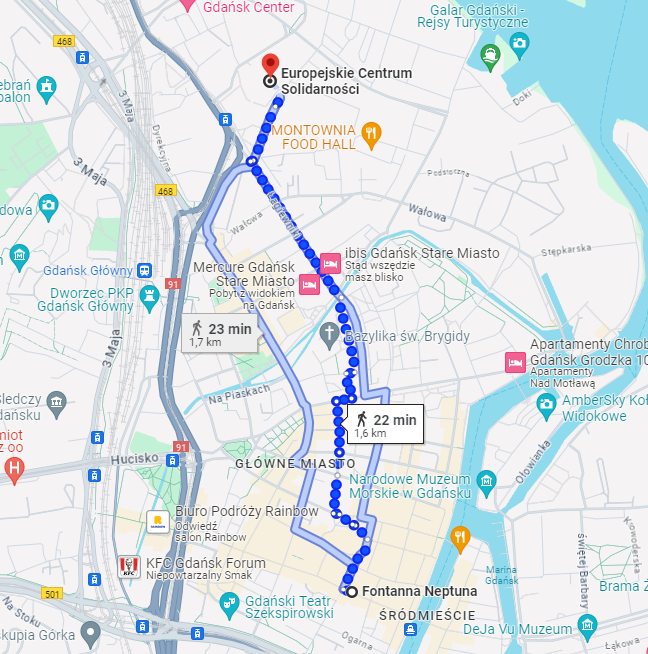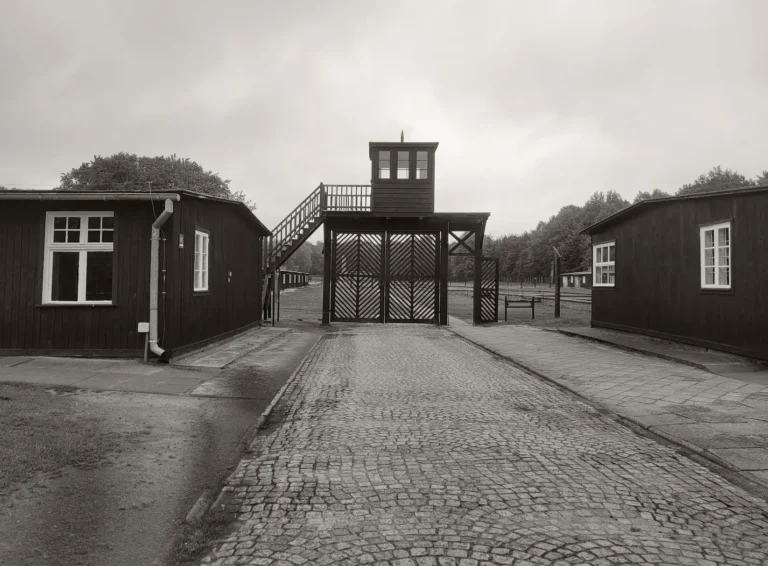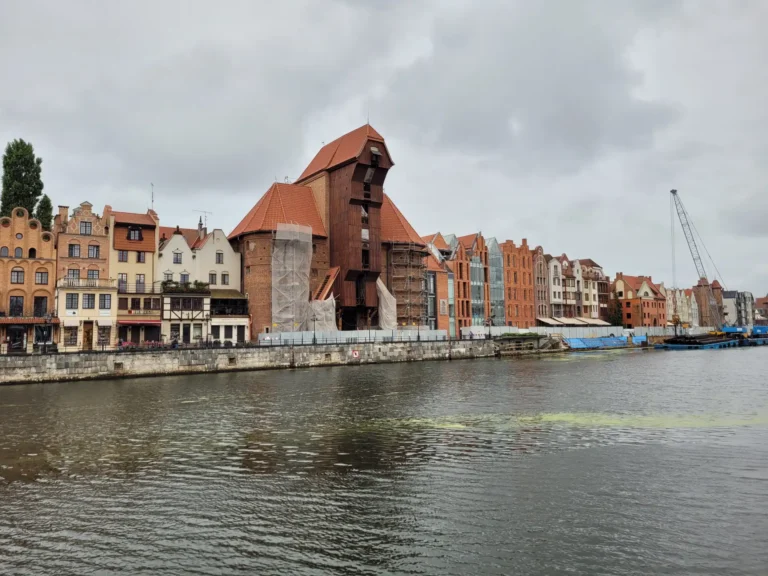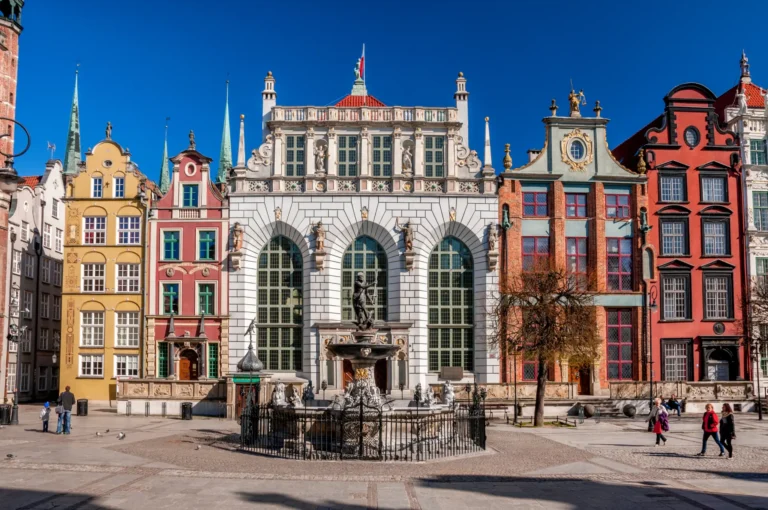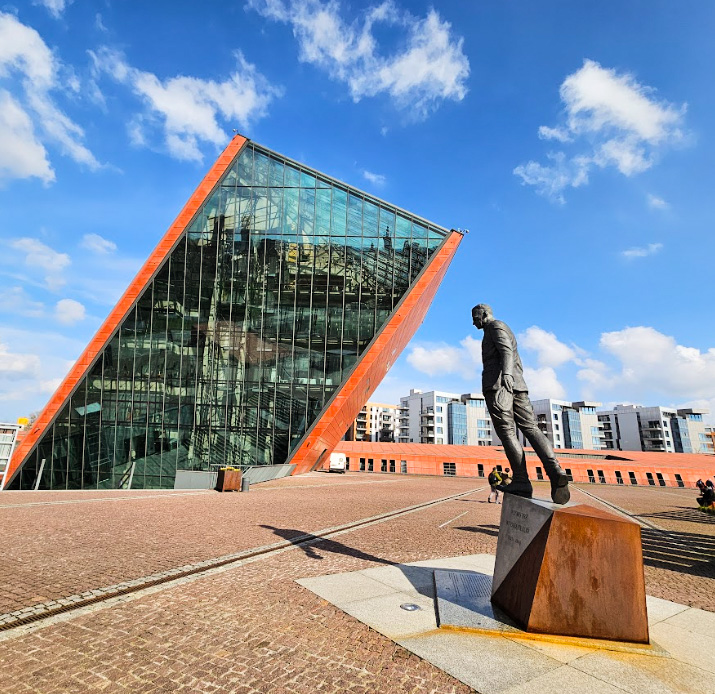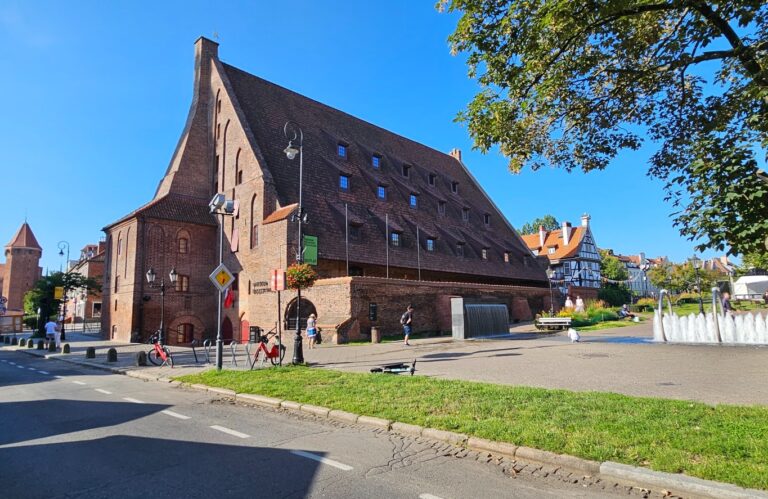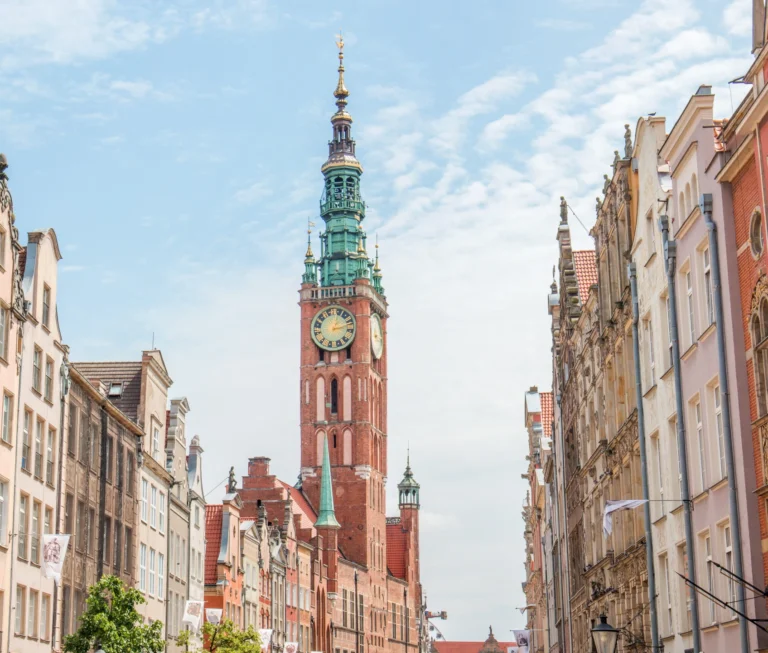European Solidarity Center

European Solidarity Center
Dlaczego warto odwiedzić European Solidarity Center
How to get to European Solidarity Center
The European Solidarity Center has an underground parking lot with 287 spaces. You can also use nearby parking spaces according to the paid parking zone in Gdańsk.
To get to the European Solidarity Center in Gdańsk by public transport, you can use the tram or bus:
- Tram: Line 2, 3, 6, 7 or 8 – get off at the “Dworzec Główny” stop. From there, walk about 10 minutes.
- Bus: Lines 100, 106, 111, 123, 131 or 151 – get off at the “Brama Oliwska” or “Wały Piastowskie” stop. From there, walk about 5-10 minutes.
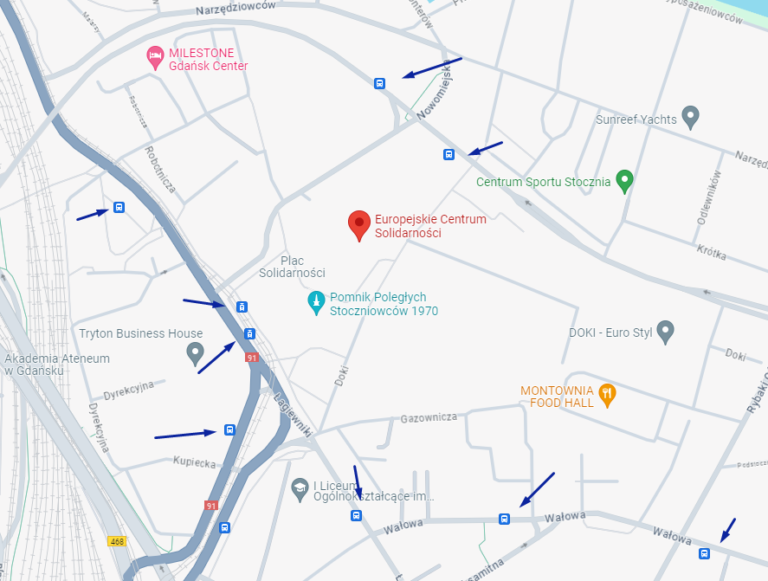
What exhibitions will you see in European Solidarity Center
This part of the exhibition is finished in dark colors, reflecting the gloomy atmosphere of that period. Here you will find, among others: TV sets with a speech by General Wojciech Jaruzelski, the militia STAR, a wall of Zombie shields and a reconstruction of prison cells. An important element is the commemoration of the miners murdered in the “Wujek” mine through a fragment of the miners’ cloakroom with plaques with their names.
In this part of the exhibition you can see a fragment of the debate between Lech Wałęsa and Alfred Miodowicz and the reconstructed Round Table, which symbolizes negotiations leading to democratic changes in Poland. Exhibits related to the June 1989 elections, such as election posters, are also on display here.
This segment is devoted to the events of December 1970, when bloody clashes occurred between protesters and the security services in Gdańsk and other Polish cities. The exhibition includes memorabilia from the protests, such as clothes belonging to the dead and injured, and a reconstruction of the office of Jacek Kuroń, an important figure of the democratic opposition. You can also see SB documents and photographs of detained protest participants here.
European Solidarity Center Google reviews:
Touring European Solidarity Center with childrens
On the premises of the European Solidarity Center there is a “Department of Fun” room, which welcomes all children up to 10 years of age. A variety of interactive stations will engage children in fun and informative activities related to solidarity and cooperation. For example, at one station, children can work together to put together puzzles symbolizing joint work and solidarity.
In the Play Department, a space covering over 400 square meters, there are many portable stations combined into a space for playing and learning. Here, children will have the opportunity to learn what it means to act in solidarity and how much good can come from working together. Interactive exhibits, multimedia presentations and historical memorabilia make learning more engaging.
Young people can experience the history of Solidarity through VR technologies, which take visitors back in time to key moments in the history of the movement, such as strikes in the Gdańsk Shipyard or the Round Table talks. There is also a specially designated space where young people can relax, talk and exchange impressions after sightseeing. Workshops, discussions and film screenings aimed at younger visitors are also often held there.
Frequently Asked Questions
October – April
Monday, Wednesday – Friday | 10–17
Saturday – Sunday | 10–18
Tuesday | closed
May – September
Monday – Friday | 10–19
Saturday – Sunday | 10–20
Tuesday | closed
The number of tickets for the exhibition is limited. Booking in advance ensures that you can visit the museum and avoid long lines at the ticket offices.
The European Solidarity Center in Gdańsk is a place where you can learn about the history of the Solidarity movement, which played a key role in overthrowing communism in Central and Eastern Europe. Interactive exhibitions, multimedia presentations and educational workshops make the visit fascinating and informative.
There is a food court in the European Solidarity Center (ECS). Visitors can enjoy cafés and restaurants that offer a variety of dishes, snacks and drinks. It is an ideal place to rest after visiting exhibitions and enjoy the pleasant atmosphere of the center.
A guided tour of the European Solidarity Center usually lasts approximately 90 minutes to 2 hours. This time may vary depending on the interests of the group and the pace of the tour. The guide adapts the route and visiting time to the needs and preferences of visitors.
Yes, the European Solidarity Center (ECS) is accessible to people with disabilities. The building has been designed to ensure full accessibility, which includes:
All levels of the center are accessible via elevators and ramps, allowing easy movement around the facility.
Luggage lockers are available at the European Solidarity Center in Gdańsk. Lockers are located in the cloakroom, where visitors can safely store their belongings while exploring the center. This makes it easier to visit and allows you to enjoy the exhibitions without having to carry luggage.
ECS has a policy regarding the introduction of animals. Dogs are not allowed into the facility, with the exception of dogs assisting disabled people.
You can take photos, but with some restrictions. Visitors are usually asked not to use flash or tripods so as not to disturb other visitors and damage the exhibits. It is also worth paying attention to any signs that may indicate areas where photography is not allowed.
European Solidarity Center
The European Solidarity Center (ECS) in Gdańsk is a modern museum and educational center devoted to the history of the Solidarity movement and democratic changes in Poland and Central and Eastern Europe. Located in the symbolic space of the Gdańsk Shipyard, ECS offers a rich, interactive permanent exhibition that presents key events and figures related to the fight for freedom and human rights.
The center also has a library and an archive where visitors can deepen their knowledge. Workshops, conferences and meetings with historical activists are regularly organized. The building, distinguished by its modern architecture, is fully accessible to disabled people, has a catering zone and relaxation spaces.
ECS is an important place of memory and education, encouraging reflection on the value of solidarity and cooperation in today’s world.

